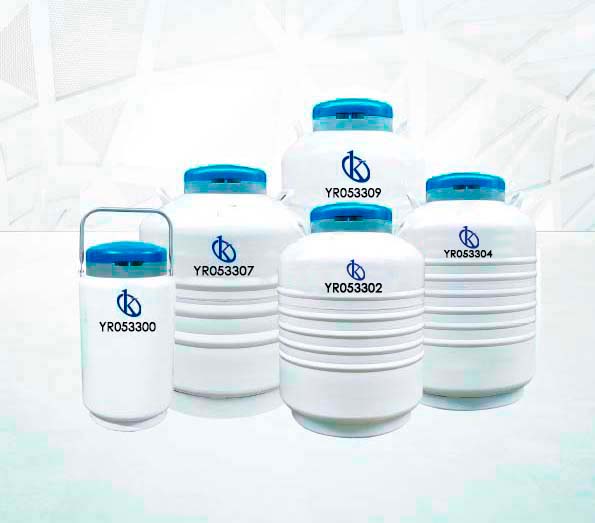Liquid nitrogen tanks are units used for the conservation of laboratory samples at very low temperatures. Due to fast freezing, it prevents damage to structures and protects processes from moisture, oxidation and contamination.
They are also equipped with transfer technology, insulation and high durability, to ensure biological samples without any type of failure, with uniform temperatures and the lowest consumption of liquid nitrogen. The temperature of the entire maintenance area does not exceed 10°C, and the lowest can reach -190°C and the liquid nitrogen is colorless and tasteless.
Liquid nitrogen tanks generally have special characteristics to provide safety and protection to the personnel handling it, must have structures resistant to low temperatures, to prolong storage times.
Composition of Liquid Nitrogen Tanks
The tanks are composed of stainless steel containers to withstand low temperatures, and on the outside carbon steel, isolated from each other, by a combination of high vacuum and insulating material. They contain, gaseous nitrogen, which has been cooled to liquefy and changed to cryogenic liquid state. The vapors and gases they release are also very cold, so it often condenses the ambient humidity, creating very visible mists and in this way, it is transported more easily (the necessary space is reduced) and contains colder.
Liquid nitrogen is the most commonly used cryogenic, and thanks to the nature of this product, the necessary forecasts must be taken during its maintenance and use. Due to the low temperatures, they make most solids brittle, and can be easily fractured, if they come into contact with cryogenic liquids.
Therefore, special danger is presented during the handling of the tanks, since a decompression of the gas would make the expansion so fast, that it would cause the rupture or possible explosion of the tanks.
It should be noted that a leak of liquid nitrogen when it spreads can result in approximately 700 liters of gas, therefore, it is only necessary that a small volume of liquid nitrogen evaporate, so that there is oxygen deficiency in the atmosphere.
Operation of Liquid Nitrogen Tanks in Laboratories
These units are the most recommended tools for laboratories, because they provide help in the transport and conservation of samples, in addition, they are easy to transport. This makes it very useful in a wide variety of applications, such as:
- Preservation of frozen biological samples.
- Achieves a quick freeze that prevents damage to structures.
- Storage of blood, eggs and sperm.
- Preserves samples of tissue and sample cells in a laboratory.
It is advisable to maintain safety in handling, because it is an inert gas, which displaces oxygen and because of its low temperature, can produce burns. The protection of eyes, face and skin from possible splashes in handling and transfer is also recommended. It can cause severe frostbite burns, which can occur even when contact is short or with very little fluid.
For those in a laboratory, they are at risk of choking if liquid nitrogen (which is colorless, odorless and tasteless) is used or watered in a closed place.
Liquid Nitrogen Tanks in Kalstein
- High Capacity
- High thermal efficiency
- 5-year vacuum warranty
- Extended wait time
- LN Dispenser
- Round boats for straw storage
- lockable
- Roller bases available
- All models are offered with a variety of stainless steel containers and cryogenic polycarbonate boxes.The locking cover is optional.
To learn more about our products, visit HERE At Kalstein, as manufacturers, we offer you all the advice our customers need, so that your purchase is ideal, and at excellent prices. Come, visit us at HERE

